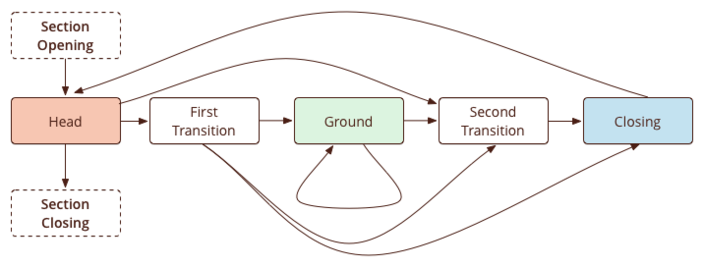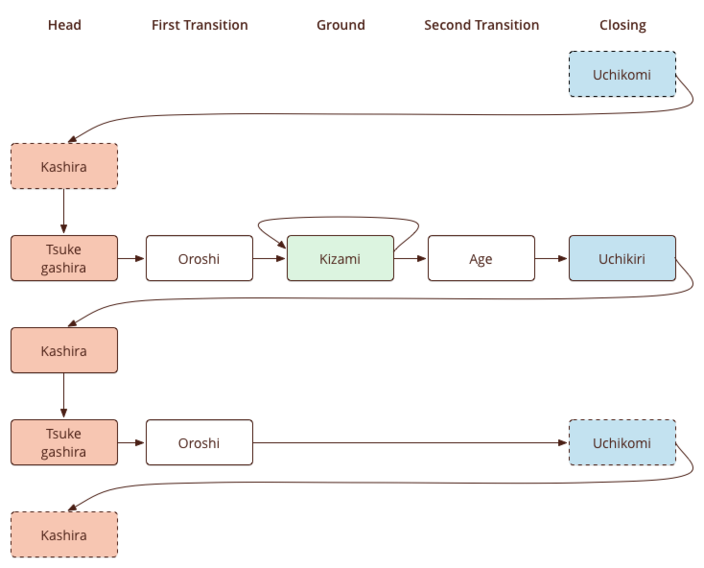Taiko (Stick Drum)
There are two taiko schools: Komparu and Kanze. Featured NAKATA Hiromi and all musical examples are from the Komparu tradition.
Strokes
There are five basic sounds and one soundless motion (kesubachi) produced on the taiko drum:
Soundless motion
The taiko player lifts very slightly the sticks, only to bring them back on the instrument’s membrane without creating a sound. It can be performed one stick at a time or both sticks together. The motion helps the player keep the count. It is notated with a black-nothead in parenthesis.
Kakegoe
The taiko players use the following kakegoe: yo, ho, iyo and yoi (ei in Kanze school). The exact pronunciation of vowels as well as dynamic and melodic shape can significantly vary depending on the dramatic context, school and performer. Click below to hear examples of calls for the Komparu tradition:
-
ho
-
iya
-
yo
-
yoi
Rhythmic Organization
The sounds of the taiko are sequenced to create patterns. Most patterns are eight beats long and typically start on the 2nd or 6th beat of the 8-beat metric unit (honji). However, there are patterns as short as two and as long as forty-eight beats. The patterns are sequenced into larger phrases and sections. They are selected and ordered according to various sets of rules based on their formal function. A pattern can assume one of the following functions: Head, First Transition, Ground, Second Transition, or Closing.
The following figure shows an example of how patterns are sequenced to create a cycle.

This sequence from Head to Closing and back to Head, which follows the Section Opening, functions as a cycle that may be repeated until the Closing Section patterns end the module. The Ground pattern can repeat multiple times before moving to a pattern from another category. The cycle is unidirectional and normally closes with the Head pattern. As the sequence moves to a new cycle, a different pattern for each category can be used, but the decision about the selection, repetition of a pattern, and/or the omission of a specific category is strictly prescribed and memorized by the performers.
Here is an example of a basic sequence of rhythmic patterns.
Basic sequence of patterns

Sequence of patterns in Kokaji's Maibataraki
The Maibataraki dance from Kokaji follows immediately a Noriji chant. The Closing pattern, uchikomi, which begins the recording, followed by the Head pattern, kashira, close the chant module and signal the imminent beginning of the Maibataraki, whose principal rhythmic sequence starts with the Head pattern, tsuke gashira (third line). The last uchikomi and kashira patterns (fifth and sixth lines) form the dance’s Closing section.
